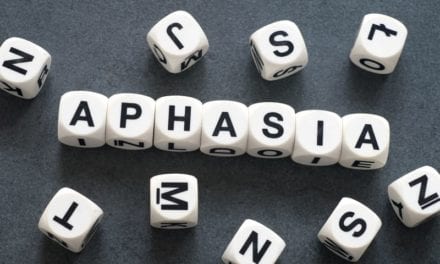Results from a 20-patient controlled study presented recently at the International Stroke Conference 2015, and reported in a news release from Medscape, suggest that vagal nerve stimulation (VNS) could be a safe and feasible aid to rehabilitation in stroke patients. Jesse Dawson, MD, from the Glasgow Western Infirmary, United Kingdom, who presented the results, concludes that the results are encouraging and merit further study, the release notes.
The vagus nerve connects with brainstem structures, and activation causes the release of pro-neuroplastic mediators, such as acetylcholine, over the cerebral cortex, Dawson explains, per the release.
“If we time release these neurotransmitters at the specific time of movements during rehabilitation, we may drive neuroplasticity for those specific tasks,” he says in the release. “There is some evidence of efficacy in this regard in preclinical models of stroke.”
VNS is already used to treat epilepsy, and the Cyberonics device used in this study has been implanted into 90,000 patients with epilepsy since 1997, Dawson reports in the release. The implantation involves a short surgical procedure that takes about 1 hour, per the release.
The study included 20 patients who experienced chronic ischemic stroke and moderately severe arm dysfunction, whose mean ages were 60 years, and were approximately 2 years post-stroke, according to the release. They were randomly assigned to receive intensive physiotherapy with or without VNS.
Physiotherapy was delivered in three 2-hour sessions each week for 6 weeks, according to the release. Each session included 300 to 400 movements, and among those participants in the VNS group, each movement was paired with a 0.5-second burst of stimulation.
No serious side effects were reported with the use of VNS, per the release. Minor side effects included nausea, mild dysphagia, and transient hoarse voice (which was thought to be related to the surgical implantation).
Participants in the VNS-treated group displayed a numerically improved Upper Extremity Fugi-Meyer score, which measures upper limb function, the release explains. This result did not reach significance in the intention-to-treat analysis, but it did become significant in the per protocol analysis, the release notes.
International Stroke Conference Session Chair Kennedy Lees, MD, also from Glasgow Western Infirmary, commented on the study’s findings in the release, saying it is “an intriguing idea. The numbers are tiny, but this is very much something that needs to be progressed further.”
Per the release, another study is now under way in the United States to see whether these results can be replicated.
[Source: Medscape]





Its nice knowing this, thank you for the post!